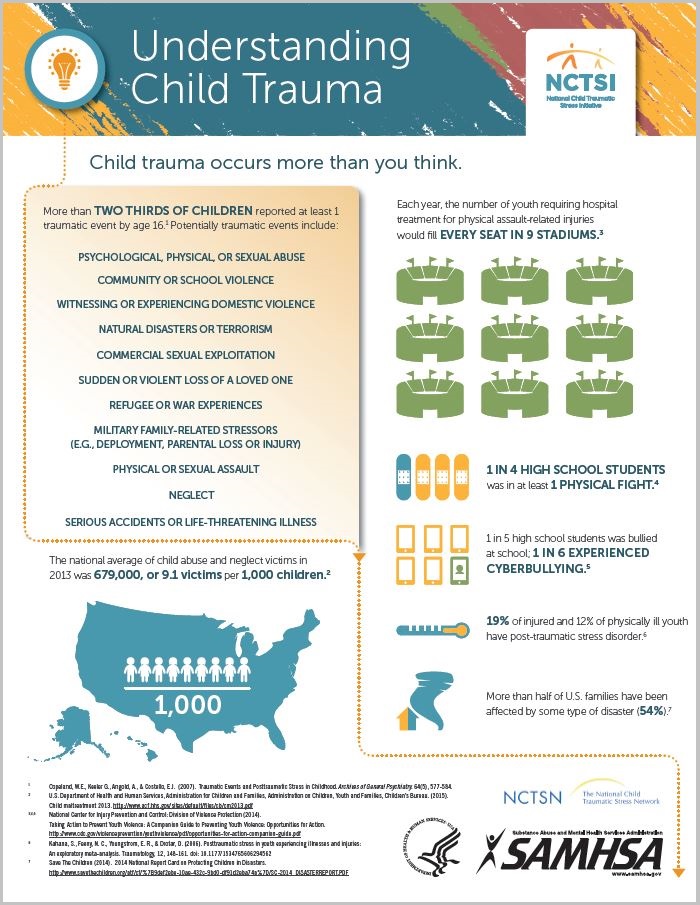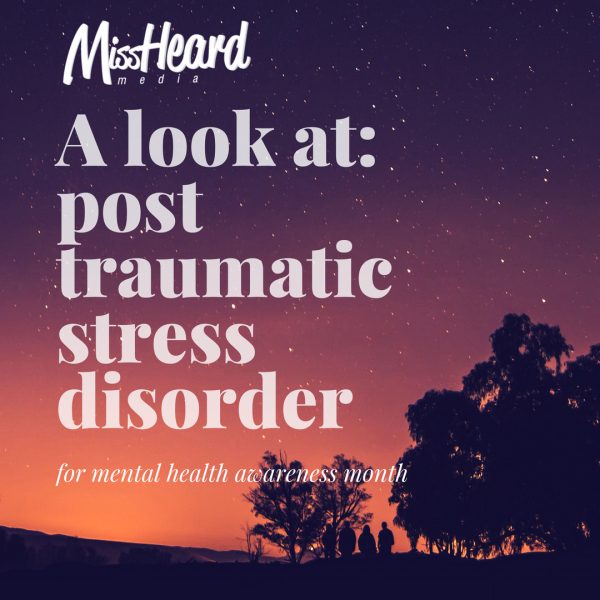Mental Health 302:
Post Traumatic Stress Disorder (PTSD)
by Lindsey Turnbull
May is Mental Health Awareness Month. This year’s theme is CureStigma, encouraging us to change the perception of mental health and mental illness. So far, we have shared a general overview of Mental Health, and more focused looks at anxiety and depression, eating disorders, and Obsessive Compulsive Disorder. If you have not read these articles, they are a great place to start. All information provided here is a general overview and not a substitute for medical advice from a licensed professional!
Today, we’re focusing on PTSD. PTSD, or Post traumatic stress disorder, is an anxiety disorder that can occur after witnessing or experiencing a traumatic event, or learning that something traumatic happened to a loved one.
It is natural to feel afraid during and after a traumatic situation. Fear triggers many split-second changes in the body to help defend against danger or to avoid it. This “fight-or-flight” response is a typical reaction meant to protect a person from harm. Nearly everyone will experience a range of reactions after trauma, yet most people recover from initial symptoms naturally. Those who continue to experience problems may be diagnosed with PTSD. People who have PTSD may feel stressed or frightened even when they are not in danger. – NIMH
PTSD occurs when someone’s stress system doesn’t “shut off.” Not everyone who experiences a traumatic event will develop PTSD.
Some people think that PTSD is an adult illness- in reality, it can affect children, teens, and adults. There is no age limit for PTSD.
About 15-43% of youth experience at least one trauma. Of those, a percentage will develop PTSD. Rates of PTSD are may differ depending on the type of trauma someone experiences .

Rates of PTSD in children and teens who have experienced trauma ranges from 1% to 15%. Not everyone who experiences a traumatic event will get PTSD. Some things that can reduce the risk of PTSD include having a strong support system, finding a support group, and having positive coping strategies. Therapy can help someone who is experiencing PTSD.
Youth with PTSD may experience other mental health issues, such as depression, anxiety, acting-out behaviors, and/or substance abuse.
- physical, emotional, or sexual abuse or assault
- neglect
- acts of violence at school, at home, or in the neighborhood
- natural disasters
- car accidents
- extensive hospitalizations/major surgeries
- being diagnosed with a life-threatening illness
- military combat
- sudden, unexpected death of a loved one
- witnessing another person go through these kinds of traumatic events
In teenagers, PTSD symptoms typically look like those of adults, and teens are more likely to show impulsive and aggressive behaviors.
Other symptoms include: fear, sadness, anger, loneliness, low self-esteem, lack of trust, irritability, shame, anxiety, guilt, hyper-vigilance.
PTSD may also include physical symptoms like stomach aches, headaches, muscle pains/tensions.
Also, someone experiencing PTSD may avoid going to new places, have trouble sleeping, cry, have trouble concentrating, be jittery, be aggressive and hostile, have tantrums, and/or want a parent or adult present at all times.
PTSD can also lead someone to avoid contact with, or reminders of the event, such as avoiding a street where a car crash took place, declining grades, high risk behaviors, struggling socially, withdrawal.
PTSD symptoms are often cued, or triggered, by things that happen in or outside of our bodies. Internal triggers can include feeling lonely, abandoned, sad, angry, or anxious.
External triggers include: arguments, seeing an article that reminds you of the event, certain smells, the end of a relationship, holidays, a specific place, seeing a car accident, anniversaries, seeing someone who reminds you of your traumatic event.
It is likely not possible to avoid all triggers, treatments like therapy can help someone learn positive coping methods to lessen the impact of things that are upsetting.
If you have been diagnosed with PTSD (like I have!) here are some therapist recommended coping techniques that have helped. Everyone is different- what worked for me may not work for you, and that’s OK!
- talking with your doctor about treatment options, including medication
- exercise to help reduce stress
- Mindfulness, self-soothing, and relaxation practices including breathing techniques
- expressive art/writing
- talk to people you trust
- avoid pressuring yourself to heal “right now-” be patient!
- seek out comforting places and people
- identify your triggers
PTSD is a mental health condition that can require professional treatment. Getting help is a positive thing, PTSD is treatable!
More resources:
National Institute of Mental Health
Black Emotional Mental Health Collective
The Trevor Project for Young LGBTQ Lives
National Asian American Pacific Islander Mental Health Association
National Alliance for Hispanic Health
Indian Health Service
You can also google “Teen Mental Health + your city” to find therapists who work with teens.
Further reading:
Mental Health 101: An Overview by Lindsey Turnbull
Mental Health 201: Anxiety and Depression by Lindsey Turnbull
Mental Health 202: Eating Disorders by Lindsey Turnbull
Mental Health 301: Obsessive Compulsive Disorder by Lindsey Turnbull
VIDEO: 5 Things NOT To Say When a Friend Opens Up About Mental Health
Leaders, Your Mental Health Matters Too by Julia Schemmer
The Portrayal of Mental Illness in the Media by Tracy Yu
Lindsey’s Story: May is National Mental Health Month by Lindsey Turnbull

4 thoughts on “Mental Health 302: PTSD by Lindsey Turnbull”